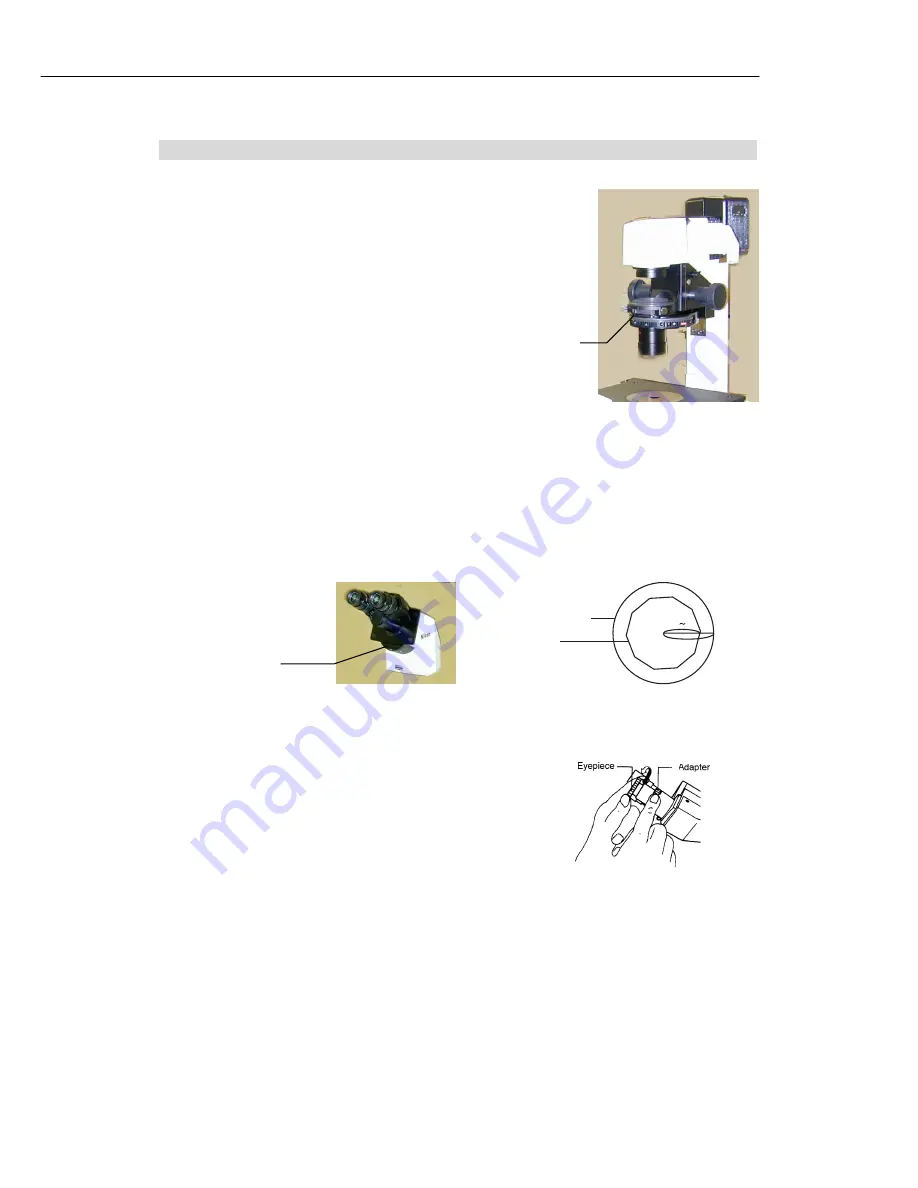
III. Operation of each part
43
6. Using condenser aperture diaphragm
The condenser aperture diaphragm adjusts the numerical
aperture (N.A.) of the illumination system.
Aperture of this diaphragm determines optical resolution,
brightness, contrast, and depth of focus. Narrowing down the
condenser aperture diaphragm decreases resolution and
brightness, and increases contrast and depth of focus. Because
these characteristics are interrelated and cannot be controlled
one by one, the aperture must be adjusted for each specimen
and application.
Adjustment of the condenser aperture diaphragm is especially
important for bright-field microscopy, DIC microscopy, and
photomicrography. Generally, aperture settings of 70 to 80% of
the objective N.A. yield good images of appropriate contrast.
Adjust the aperture while observing the diaphragm image.
Moving the lever to the left stops down the diaphragm. Moving
the lever to the right opens it. Adjust so that the diaphragm
reaches 70 to 80% of the exit pupil of the objective.
••••
T-TD eyepiece tube D or T-TERG ergonomic eyepiece tube:
Turn the eyepiece tube turret to “B” to move the Bertrand lens into the optical path. Turn the Bertrand lens
focusing screw to observe an image of the objective’s exit pupil (bright circle) and the aperture diaphragm.
••••
Other eyepiece tubes:
Remove one eyepiece and insert the “centering
telescope” with an adapter. Turn the eyepiece part of
the centering telescope to focus on the exit pupil of the
objective (bright circle) and the aperture diaphragm
image.
•
When performing Ph microscopy with system condenser, be sure to fully open the aperture diaphragm. (If the aperture
diaphragm is stopped down, the optical path will be obstructed.)
•
The aperture diaphragm on “ELWD-S condenser” works only on position A (for bright-field microscopy) and has no effect
on other positions (for Ph microscopy).
•
There is no aperture diaphragm on “SLWD condenser”.
Condenser
aperture
diaphragm
lever
Turn to “B”.
Objective pupil
Aperture
diaphragm image
100
70 80












































